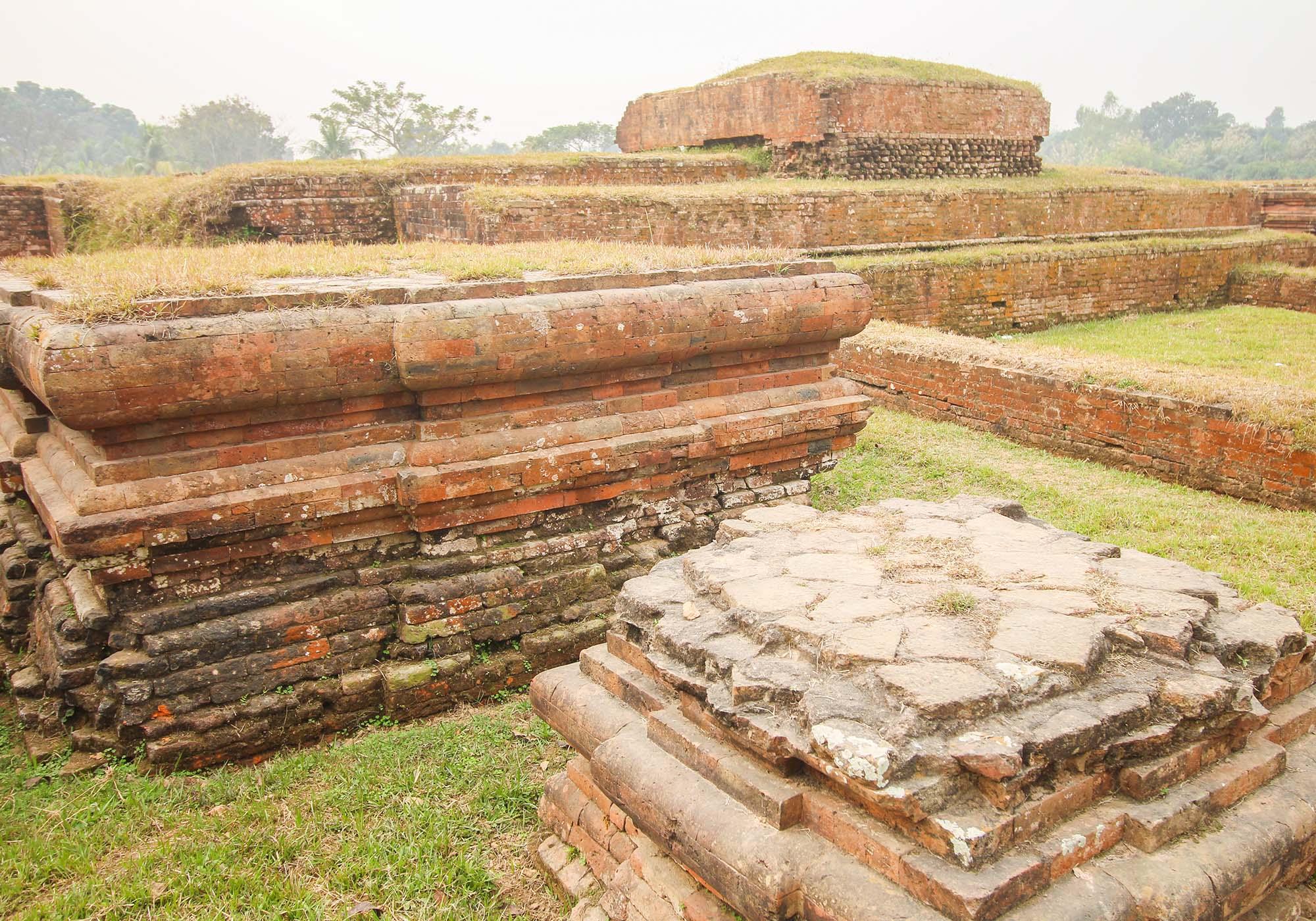The legend of Princess Sandhyavati

Although the site of the Paharpur monastery complex is normally associated with Buddhism, it also has a connection with a local religion called Satya Pir, because of a legend that is said to have taken place here.
According to the local legend, a princess called Sandhyavati went to bathe one day in the Noornadi River, that runs near the monastery site. While she was in the water, she was impregnated through a divine process, even though she was a virgin.
Later at the palace, which is said to be the Paharpur monastery of Somapura Mahavihara, her father, King Mahidal, found out about the pregnancy. Not believing that it was caused by a divine blessing and assuming that his daughter had sinned, he banished Princess Sandhyavati from the kingdom.
In time, Sandhyavati gave birth to a baby boy called Satya Pir. After he grew up, Satya Pir returned to his grandfather's kingdom to tell him about a new religious faith. King Mahidal was sceptical at first and resisted his grandson's appeal to join the new faith. But, after much debate and struggle, he eventually agreed to accept it.
The legend finishes by describing how this event was celebrated by distributing rice pudding to all the king's subjects and a new temple was built and named 'Satya Pir er Bhita'.
Now, while there is little evidence to support the narrative of the legend, there are a number of things that still exist today that are related to the story.

Firstly, there are archaeological remains at the Paharpur site that are consistent with the description of the temple. The ruins are what we called the Temple of Tara and are found behind the present museum building.
Secondly, there is a bathing place on the edge of the Noornadi River that is known locally as 'Sandhyavati er ghat'. It's about 30 metres away from the Paharpur monastery complex and is almost four metres wide with brick walls on each side, supporting a gradual slope down to the river's edge where there are limestone slabs.
And thirdly, there is a local religion that is still practised in Bengal that is called Satya Pir, the name of the legendary son who is said to have created the faith.
The faith is actually a blend of Islam and Hindu. While Muslims usually call it Satya Pir, Hindus normally use the name Satya Narayan. Either way, it is virtually identical.
While there is no conclusive version of events that explains how the fusion of Islam and Hindu created this local faith, most experts believe it happened during the 15th or 16th century. Seeing as the temple was built at least 700 years earlier, it seems unlikely there is much historical truth in the local legend. But that's not always the point of stories like this, is it?

